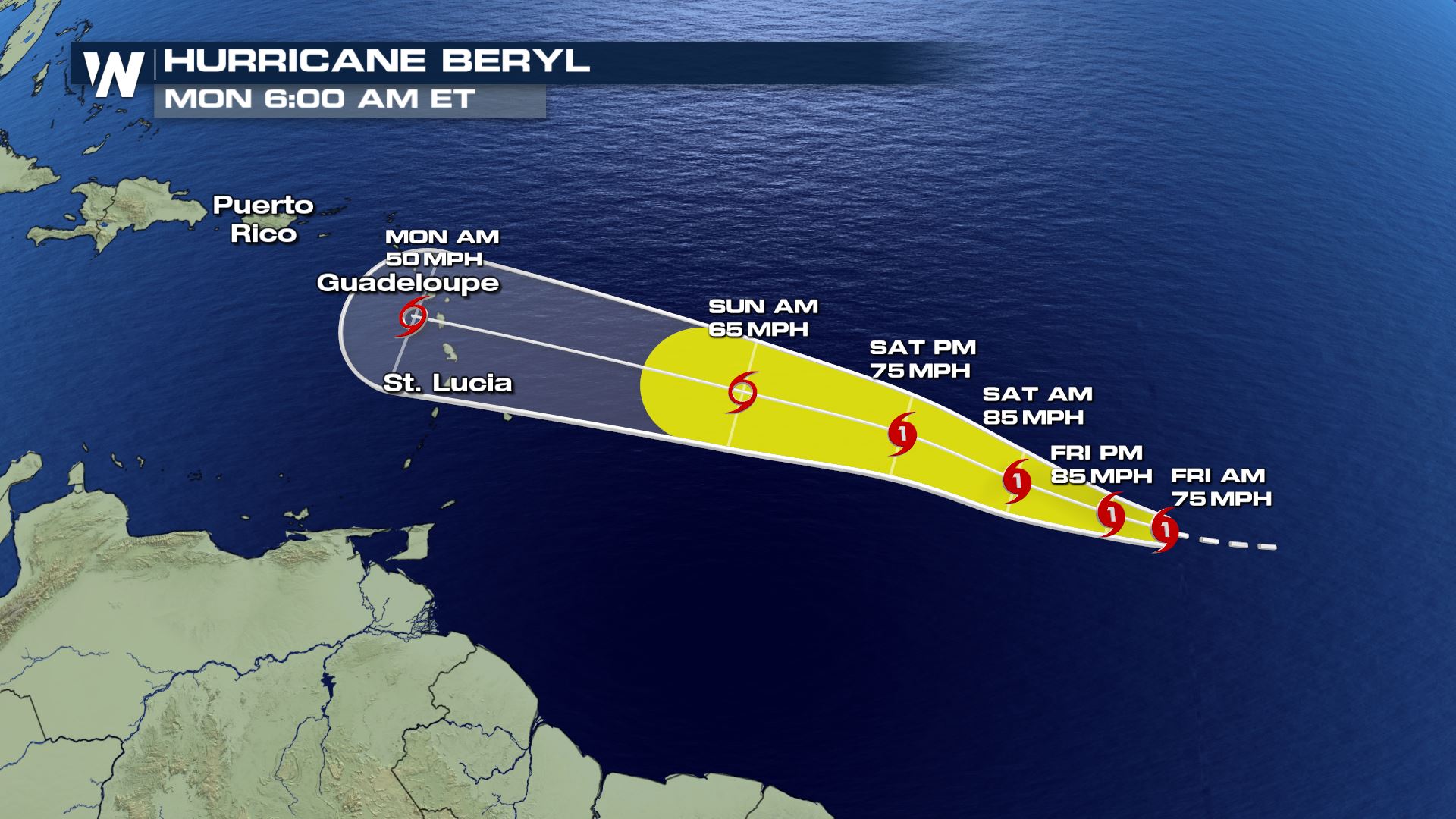Forecast Trajectory and Impact

Hurricane beryl forecast – Hurricane Beryl is forecasted to move northwestward over the next few days, with an expected landfall on the Gulf Coast by early next week. The exact timing and location of landfall are still uncertain, but the storm is expected to bring significant impacts to affected areas.
While Hurricane Beryl poses a potential threat to the region, it’s crucial to recall the devastating impact of previous hurricanes on Puerto Rico, such as the catastrophic Puerto Rico hurricane. As we monitor the trajectory of Hurricane Beryl, it’s essential to prioritize preparedness measures and heed the guidance of local authorities to ensure the safety of our communities.
Based on current forecasts, Hurricane Beryl is expected to bring high winds, heavy rainfall, and potential storm surge to the Gulf Coast. Wind speeds are predicted to reach up to 120 mph, with gusts even higher. The storm surge could reach up to 10 feet in some areas, leading to coastal flooding and erosion.
With Hurricane Beryl’s forecast track still uncertain, residents in Barbados are keeping a close eye on its progress. The storm is expected to pass south of the island, but hurricane beryl barbados could still bring heavy rain and strong winds.
Forecasters are urging residents to remain vigilant and follow official advisories as the storm approaches.
Potential Impacts
- High winds: Hurricane-force winds can cause widespread damage to buildings, infrastructure, and vegetation. They can also lead to power outages and transportation disruptions.
- Heavy rainfall: Torrential rains can cause flash flooding, river flooding, and mudslides. They can also lead to road closures and water contamination.
- Storm surge: A storm surge is a rise in sea level caused by the storm’s winds and pressure. It can cause coastal flooding, erosion, and damage to infrastructure.
Forecast Summary
| Parameter | Forecast |
|---|---|
| Location of landfall | Gulf Coast |
| Timing of landfall | Early next week |
| Maximum wind speeds | 120 mph |
| Storm surge | Up to 10 feet |
| Rainfall amounts | Heavy rainfall, with potential for flash flooding |
Preparedness and Evacuation

In the face of an approaching hurricane, preparedness and evacuation are crucial for ensuring the safety of individuals and communities. By taking proactive measures, individuals can mitigate potential risks and respond effectively to the storm’s impact.
Evacuation Procedures
When an evacuation order is issued, it is imperative to follow the designated evacuation routes and proceed to the nearest shelter. Evacuation routes are carefully planned to avoid areas prone to flooding or other hazards. Designated shelters provide safe refuge during the storm, offering essential amenities such as food, water, and medical care.
Emergency Plan and Supplies
Having an emergency plan and assembling an emergency supply kit are essential preparedness measures. An emergency plan should Artikel evacuation procedures, meeting points, and contact information for family members. The emergency supply kit should include non-perishable food, water, a first-aid kit, essential medications, and a battery-powered radio for communication.
Real-Time Updates and Monitoring: Hurricane Beryl Forecast

Accurate and timely information is crucial during a hurricane. A real-time tracking system is essential to monitor Hurricane Beryl’s progress and provide up-to-date information to the public.
Weather Models and Satellite Imagery, Hurricane beryl forecast
Weather models and satellite imagery are powerful tools for tracking hurricanes. These models use complex algorithms to predict the storm’s path and intensity, while satellite imagery provides real-time views of the storm’s structure and movement.
Resources for Staying Informed
There are numerous resources available to stay informed about Hurricane Beryl. These include:
- Government websites (e.g., National Hurricane Center)
- Weather apps (e.g., AccuWeather, The Weather Channel)
- Social media platforms (e.g., Twitter, Facebook)
- Local news outlets
- NOAA Weather Radio